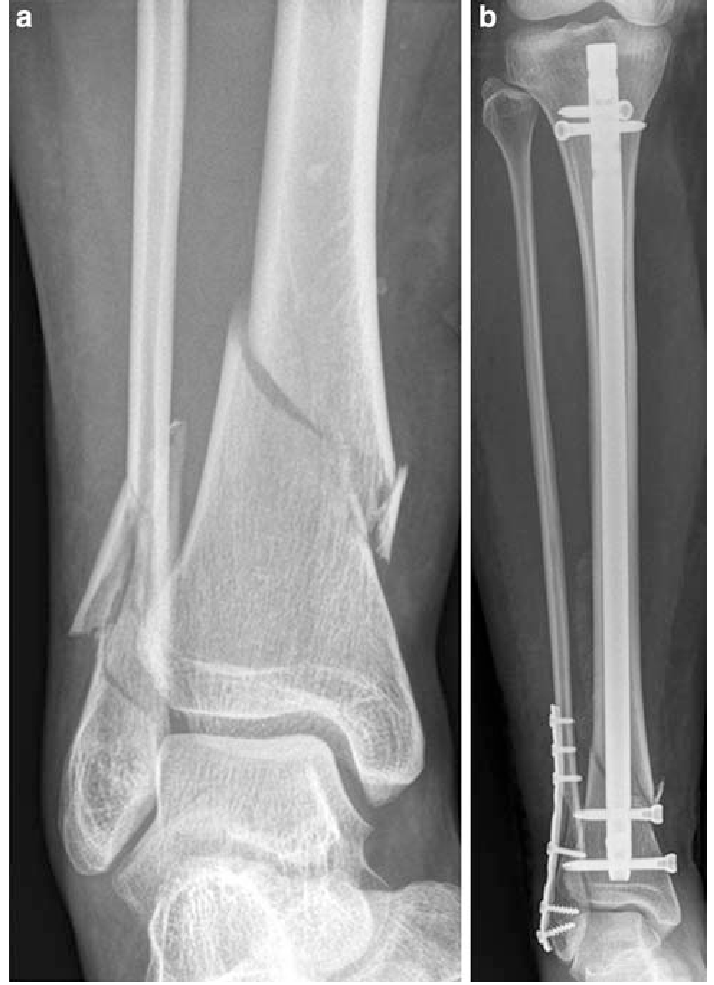Tibia Nailing/Plating
Overview
Tibia nailing and plating are orthopedic surgical procedures used to treat fractures and other conditions affecting the tibia, which is the larger of the two bones in the lower leg.
The choice between tibia nailing and plating depends on various factors, including the location and type of fracture, the overall health of the patient, and the surgeon’s expertise. Both procedures aim to stabilize the tibia, promote proper healing, and restore function to the lower leg.

Why it's done
Tibia Nailing/Plating treatment may be recommended for several reasons, including:
Tibia Nailing
- Tibia nailing is commonly performed to stabilize and treat fractures of the tibial shaft, which is the long portion of the bone between the knee and ankle.
- This procedure is particularly suitable for closed fractures or fractures with minimal soft tissue damage.
- Intramedullary nailing involves inserting a metal rod (intramedullary nail) into the medullary canal of the tibia. This provides stable fixation, aligns the fractured bone segments, and supports the healing process.
- The procedure is minimally invasive compared to open surgery, as it involves a smaller incision, potentially reducing soft tissue trauma and promoting quicker recovery.
- Tibia nailing aims to restore and maintain stability in the fractured tibia, allowing for proper alignment during the healing process.
- Patients may be able to bear weight on the leg sooner after tibia nailing, facilitating early mobilization and rehabilitation.
Tibia Plating:
- Tibia plating may be preferred when fractures occur near the knee or ankle joints, where nailing might be challenging.
- In cases where a previous tibial fracture has not healed properly (nonunion) or has healed in an incorrect position (malunion), tibia plating may be used to realign and stabilize the bone.
- Complex tibial fractures, including fractures with extensive soft tissue damage, may be better addressed with plating to provide stable fixation.
- Plating allows for the preservation of bone length, which can be crucial in certain fracture patterns.
- Plating allows for a more customizable approach to address specific fracture patterns and anatomical considerations.
- Plating provides additional points of fixation along the bone, contributing to stability.
Risk
Tibia Nailing/Plating treatment like any major surgery, can pose potential risks and complications. Some of these include:
- Bleeding
- Infection
- Anesthesia Risks
- Nail Migration
- Neurovascular Injury
- Joint Injury
- Nonunion or Malunion
- Hardware Issues
- Delayed Healing
- Soft Tissue Complications
- Joint Stiffness
How do I get ready for Tibia Nailing/Plating treatment?
Tibia Nailing/Plating treatment involves several steps to ensure a smooth procedure and recovery:
- Schedule a thorough consultation with your orthopedic surgeon. Discuss your symptoms, medical history, and the proposed treatment plan.
- Undergo necessary diagnostic tests, such as X-rays, CT scans, or MRI, to provide detailed information about the tibial condition.
- Complete a comprehensive medical evaluation to assess your overall health and identify any pre-existing conditions that may affect the surgery.
- Review your current medications with your healthcare provider. Adjustments may be necessary, especially for medications that affect blood clotting.
- Make necessary lifestyle modifications, such as quitting smoking and maintaining a healthy diet, to promote optimal healing.
- Engage in preoperative physical therapy to strengthen the muscles around the affected leg and improve joint mobility.
- Ensure a well-balanced diet rich in nutrients to support the healing process. Adequate protein and vitamin intake are essential for bone health.


